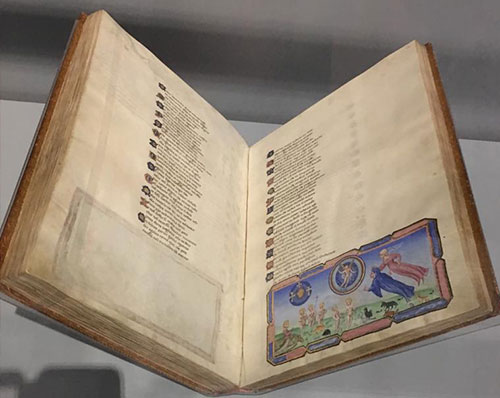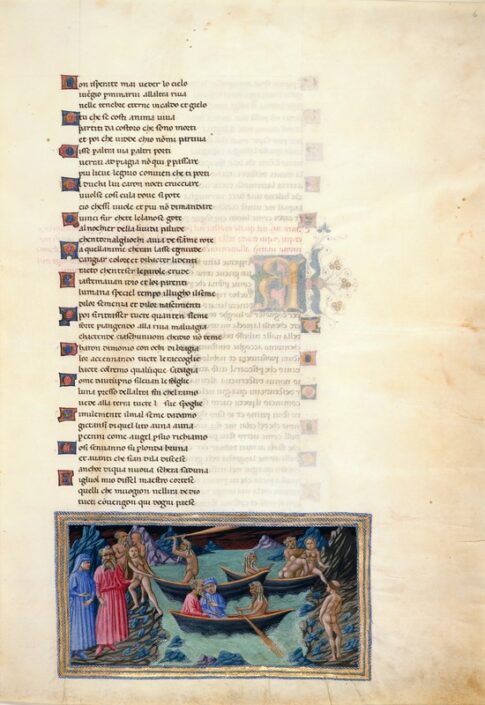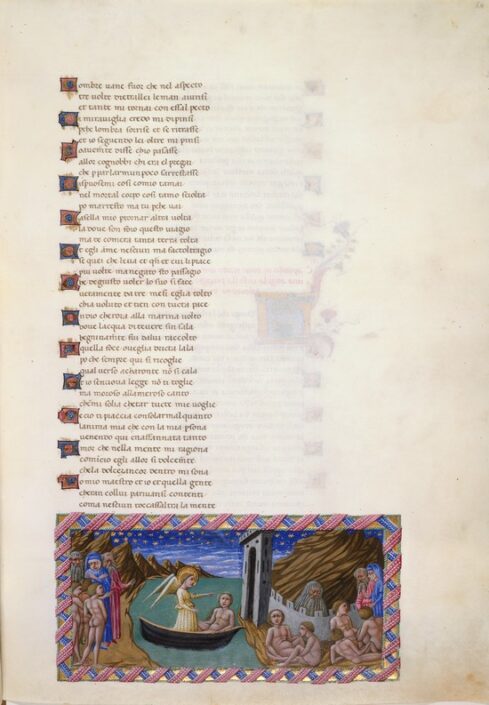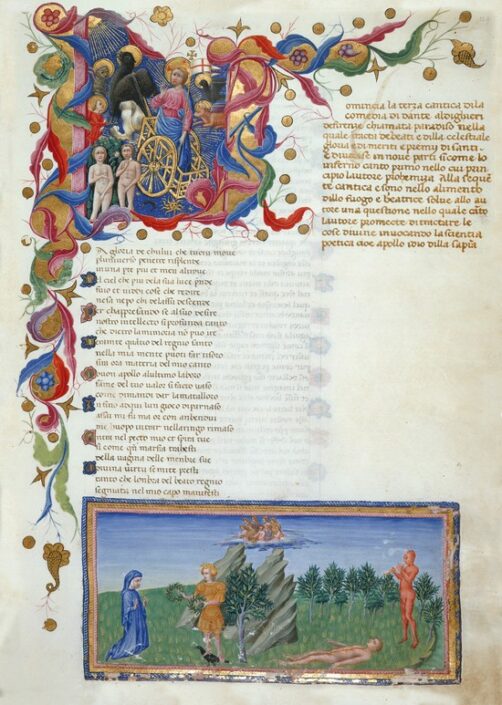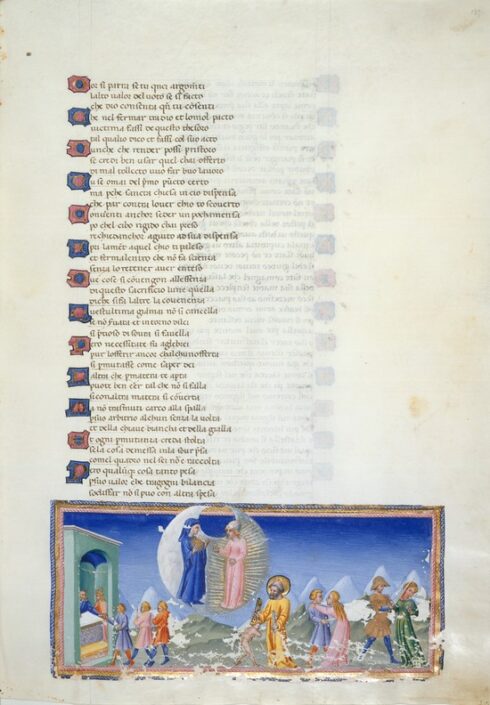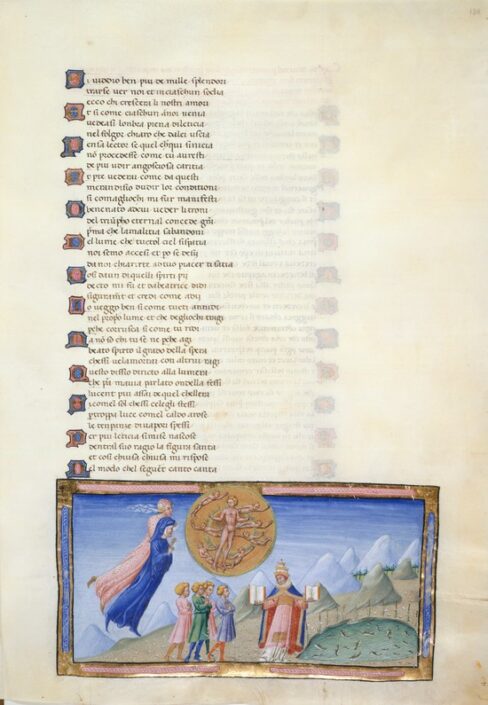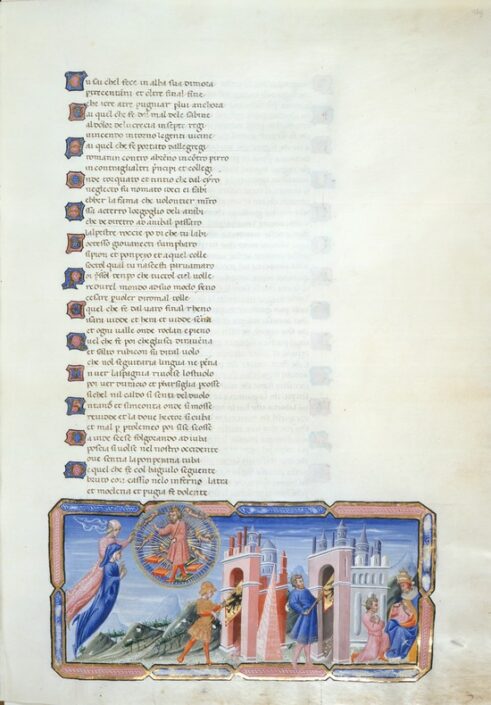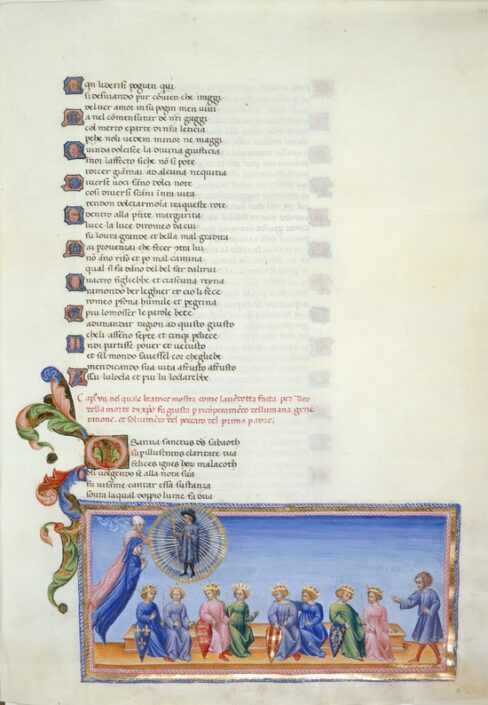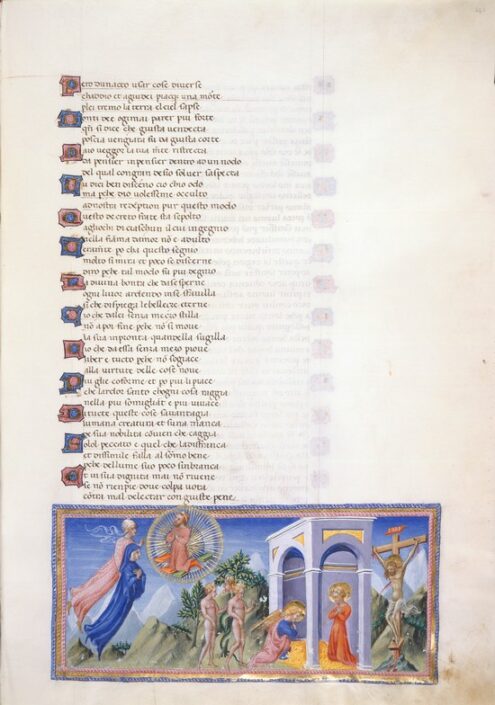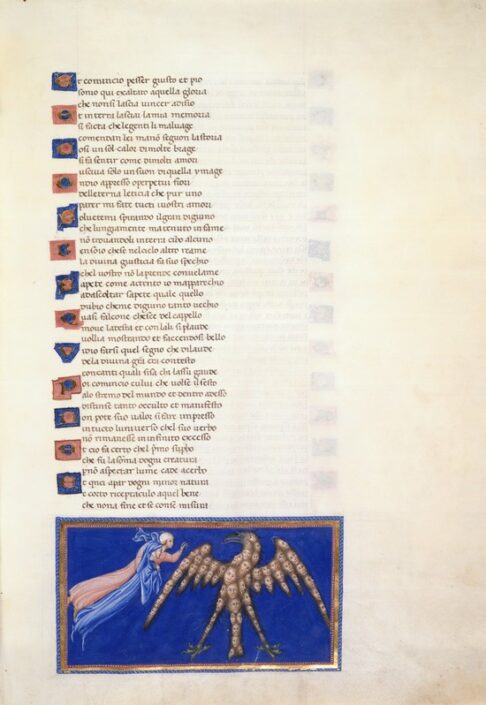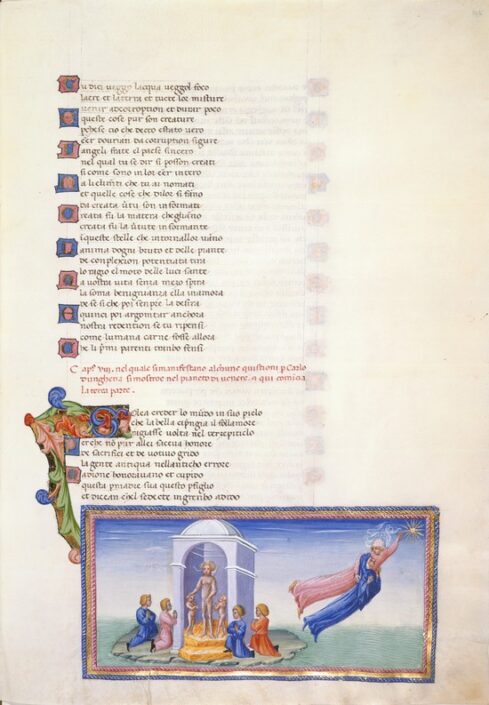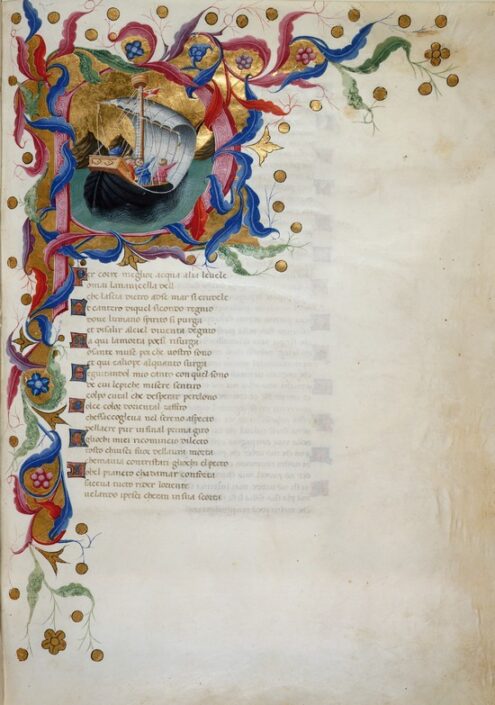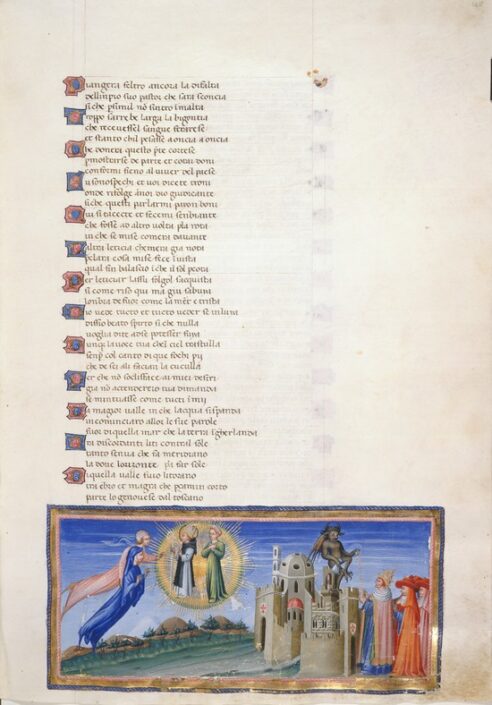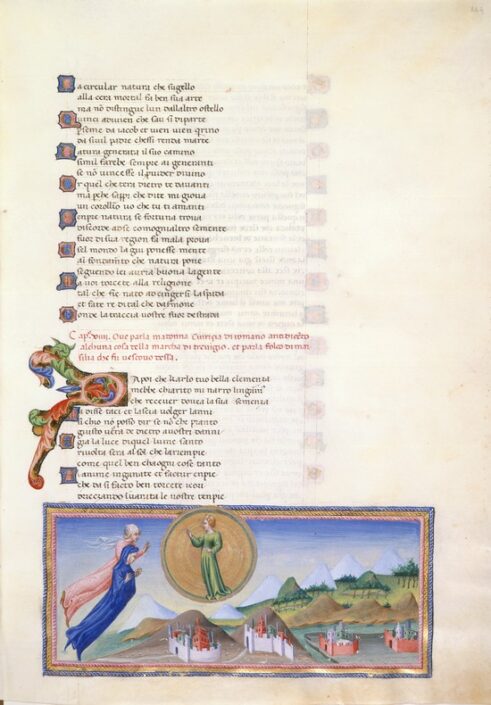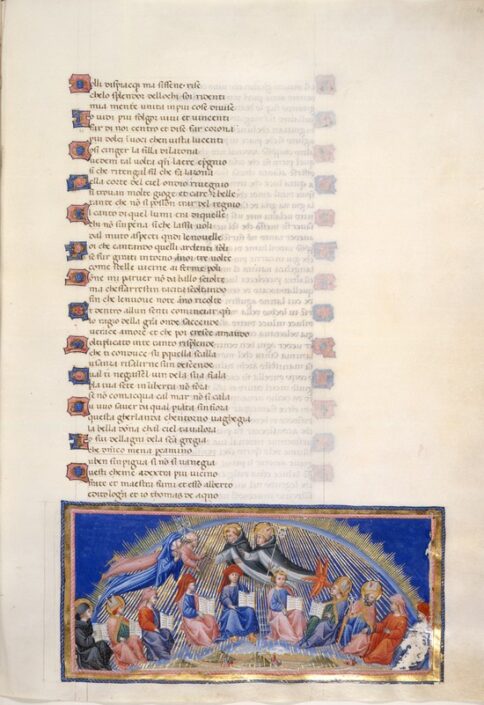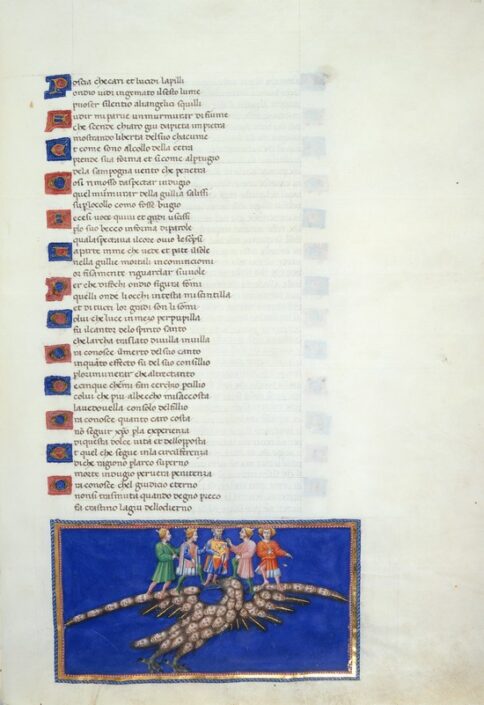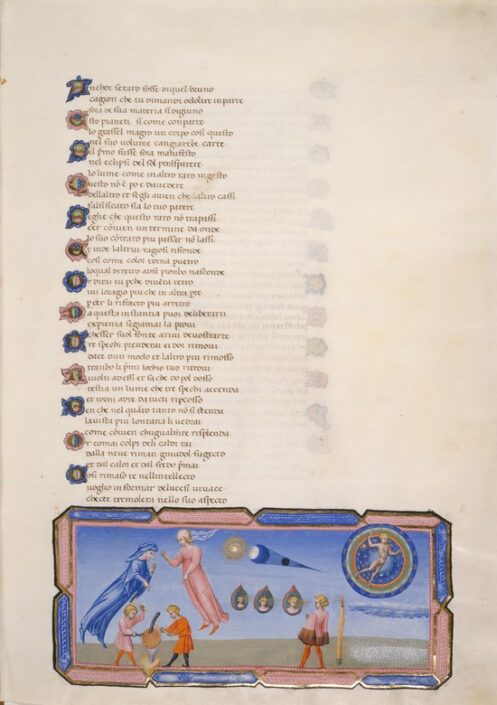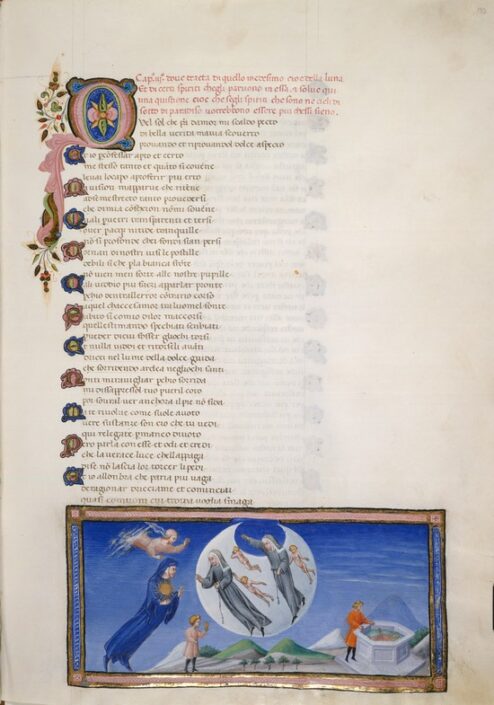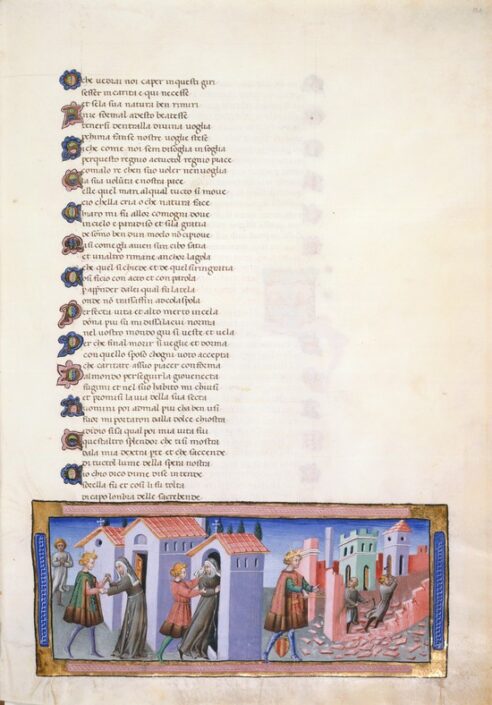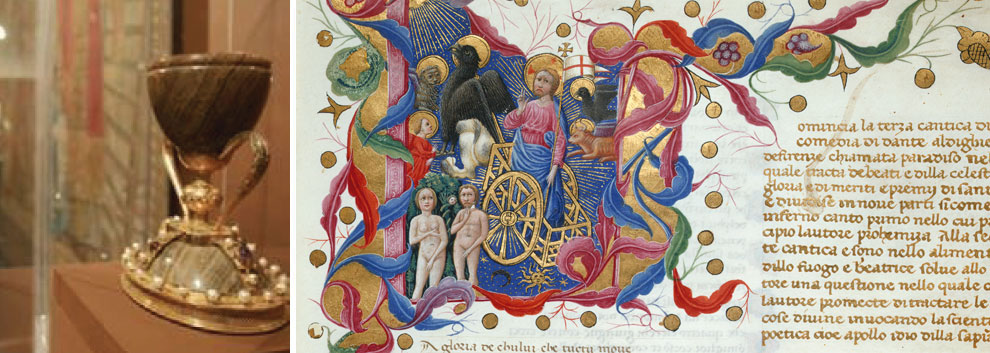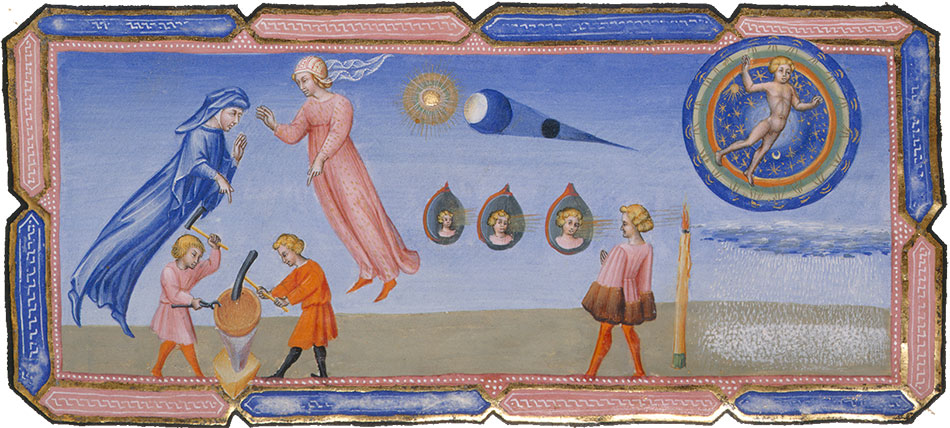The Divine Comedy of Alfonso V of Aragon and Naples
Allegorical poem in verse about the stations on the path that leads the sinful soul from Hell to Paradise.
Date of production: c 1440-1450, Siena
Format: 365 x 263 mm
Language(s) / Length: Italian, 396 pages
Content: Dante’s Divine Comedy.
Author: Dante Alighieri (1265-1321)
Binding: Natural silk velvet with Pisanello’s coin in pure gold-plated bronze, in the centre, author of the portrait of Alfonso V of Aragon and Naples
World edition with 23K gold: Unique and limited to 499 numbered and authenticated facsimile copies
Independent volume of studies: Historical and artistic introduction and identification of the illustrations.
Illustrations: 115 refined illuminated miniatures, framed in 23K gold, 3 full-page illustrations and thousands of initials in gold.
Donor: Alfonso the Magnanimous, King of Aragon, Naples and Sicily
(reigned 1416-1458)
Location: British Library Ms. Yates Thompson 36
Artists: Lorenzo di Pietro, known as “il Vecchietta”, author of the initials and of the scenes of Hell and Purgatory, characterised by a more brilliant and dramatic vision, and Giovanni di Paolo, who, in the decoration of Paradise, translated his absorbed and self-absorbed spiritual dimension into fabulous settings, full of fantasy and surrealism, as well as the impressive beauty of his landscapes, inspired by the Tuscan countryside.
Previous owners: The manuscript was later in the library of the convent of San Miguel de los Reyes in Valencia, founded in 1538 by Duke Ferdinand of Calabria.
In 1901 it was acquired by the English manuscript collector Henry Yates Thompson, whose widow donated it to the British Museum in 1941.
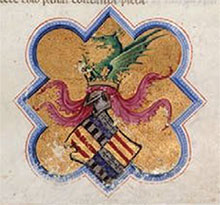
Detail Folio 1R. Coat of arms of King Alfonso V of Aragon, Naples and Sicily
First Surrealist: Giovanni di Paolo
One of the most important 15th-century painters of the Sienese school, outstanding in the International Gothic style.
The works of this brilliant artist are exhibited in the most prestigious museums in the world: Louvre, Vatican Museums, Thyssen-Bornemisza in Madrid, Metropolitan Museum in NY, National Gallery in London, Museum of Fine Arts in Houston, Art Institute of Chicago and others.
Giovanni di Paolo created the magnificent images of Paradise for this manuscript by Dante.
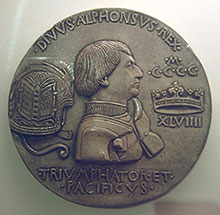
Pisanello, author of the portrait of Alfonso V of Aragon and Naples
Dante’s most notable manuscript is the one made for King Alfonso V of Aragon and Naples. Two artists were involved. The first, after a comparison with a fresco in the Siena hospital dated 1442, can be identified as Lorenzo di Pietro, known as Il Vecchieta.
He was an Italian painter, sculptor and goldsmith. Between about 1442 and 1450 he created particularly brightly coloured miniatures, which he may have developed under the influence of the well-known early Renaissance painter Domenico Veneziano. His works are exhibited in the most important museums in the world.
The second artist was Giovanni di Paolo, active in Siena until his death in 1482, who produced the magnificent miniatures of the third book, Paradise. In an image of the ninth canto, we see the city of Florence. As the three exedras designed by Filippo Brunelleschi for the cathedral, completed in 1444, are not yet visible, nor is the lantern dome begun by this famous architect in 1446, this part of the manuscript must have been conceived in the early 1440s.
Left: King Alfonso V the Magnanimous gave the Holy Grail, the cup of Christ’s Last Supper, to the cathedral of Valencia when he was unable to repay the 137,000 sueldos that he owed the cathedral. Right: Detail of Folio 129R
Folio 132R. Beatrice expounding some of Dante’s scientific theories, including the appearance of the moon.

The creation of the world and the expulsion from Paradise. MET
Patrimonio Ediciones
The only company which uses pure gold and true precious stones for its facsimiles of the most beautiful manuscripts in the world
Address
C/Martín el Humano,12.
46008 Valencia
Phone (+34) 963 82 18 34
info@patrimonioediciones.com
Legal
Schedule
Monday to Friday: 9:00-14:00 / 16:00-18:00
Saturday: Closed
Sunday: Closed


